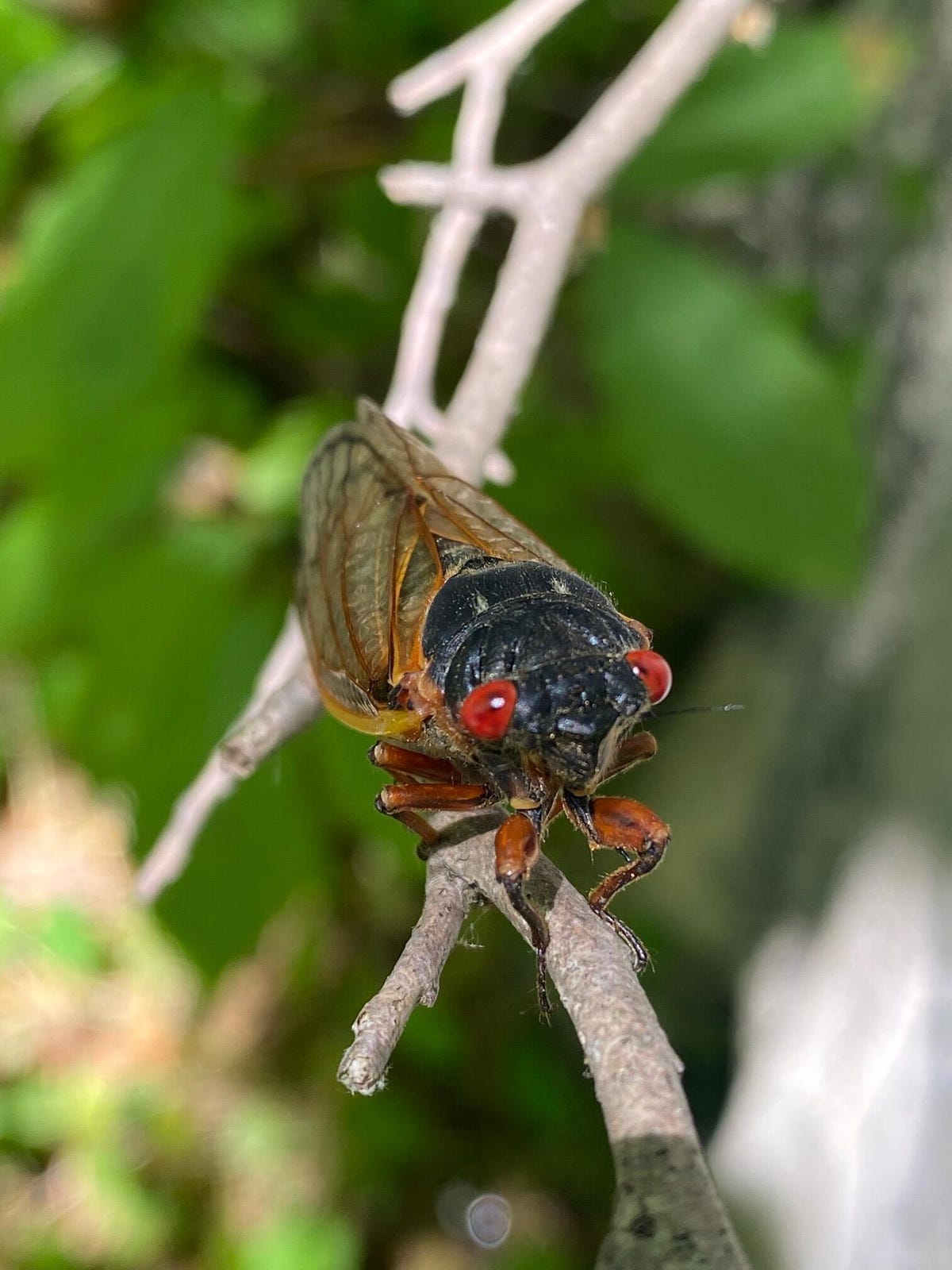Brood X cicada emergence in photos: How it looks as trillions of bugs appear
It's happening! Take in the sights of Brood X cicadas as they come out from underground for the first time in 17 years.

Hello, world!
The much-anticipated periodical cicadas known as Brood X have started tunneling out from their underground homes for the first time in 17 years in parts of the Eastern US, with trillions expected to show off their black bodies and bold red eyes in the next several weeks.
Periodical cicadas spend almost their whole lives a foot or two underground, living on sap from tree roots. Then, in the spring of their 13th or 17th year, depending on the type, mature cicada nymphs emerge for a brief adult stage, synchronously and in huge numbers for a massive mating frenzy.
Scroll through our gallery for Brood X scenes from around the country. More photos to come as more of the insects do.
Coming into the light
Here are some Brood X cicadas coming out in Powell, Tennessee, this year. The bugs typically begin to emerge when soil temperatures eight inches (20 centimeters) underground reach 64 degrees Fahrenheit (18 degrees Celsius).
Happy to be above ground
After 17 years below ground, a Brood X cicada enjoys the flowers in Powell, Tennessee.
Brood X is also coming out in Delaware, Georgia, Illinois, Indiana, Kentucky, Maryland, Michigan, North Carolina, New Jersey, New York, Ohio, Pennsylvania, Virginia, West Virginia and Washington, DC.
Making the big climb
Once they emerge from underground, periodical cicadas climb up the nearest vertical surface, as they're doing here in Annapolis, Maryland. They shed their exoskeletons and inflate their wings. After a few days resting and waiting for their shells to harden, the mating begins.
Mound of shed shells
A pile of shed Brood X exoskeletons lies at the base of a tree in Louisville, Kentucky.
No fear here
Not everyone welcomes the influx of Brood X cicadas, but in Louisville, Kentucky, 4-year-old Daphne is more than happy when one lands on her.
Satisfied squirrel
It's not just kids getting excited about the cicadas' arrival. This squirrel on the grounds of the US Capitol on May 17 doesn't seem to be complaining.
Cicada at the Capitol
A cicada husk clings to a tree at the US Capitol in Washington, DC, on May 16.
Mid-molt
A Brood X Magicicada periodical cicada begins to molt from its nymph state as it clings to the branch of a tree in Arlington, Virginia, on May 16.
Breaking free
Another view of a molting cicada, this time in Louisville, Kentucky.
Whitish for now
This picture, snapped May 22 in Arlington, Virginia, highlights how light cicadas' bodies are when the bugs first crawl out of their nymphal skin. Later, they'll harden and turn black.
On the trail of Brood X
Some cicada fans travel the country to watch the insects emerge and help map them. Their efforts help scientists better understand the broods' behavior and the insects' relationships to one another, and explore larger questions about biodiversity, ecology and climate change.
Here's Hannah Illencik, who traveled from Cleveland, Ohio, to Catonsville, Maryland, just to spend time with Brood X. Yes, that's a cicada necklace.
Friendly cicada
Cicada superfan Hannah Illencik shares some one-on-one time with a cicada in Catonsville, Maryland. "They almost have a personality," says Dan Mozgai, who runs Cicada Mania, an extensive online resource for all things cicada.
Cicada art
Baltimore, Maryland is celebrating the 2021 Brood X cicadas with Cicada Parade-a, a large-scale collaborative public art project organized by the Formstone Castle Collective.
"Cicada Parade-a represents an emergence from a long period of darkness to sing, make noise and fall in love with the world again," reads the collective's description of the project. "This theme of transformative change will be explored in each piece, not just in the sculptures, but in a collection of stories about looking back and acknowledging the changes and transformations that occur in and around us over long cycles."
It opened in May and runs through the end of summer.
Over hill, over dale
Brood X cicadas along First Street in Bloomington, Indiana. Once they come out, they're pretty much everywhere.
Garden precautions
Elsewhere in Bloomington, Indiana, a net protects a tree from Brood X. While females can damage young trees by laying many, many eggs in their branches, the egg laying also naturally prunes trees, resulting in more flowers and fruit in the years that follow.
Collecting cicadas
Floyd Shockley, a Smithsonian Museum of Natural History entomologist, collects Magicicada periodical cicadas in Rock Creek Park in Washington, DC, on May 19.
Nature doing its thing
Some people view the insects as a pesky annoyance, but others welcome them as an awe-inspiring wonder of nature.

